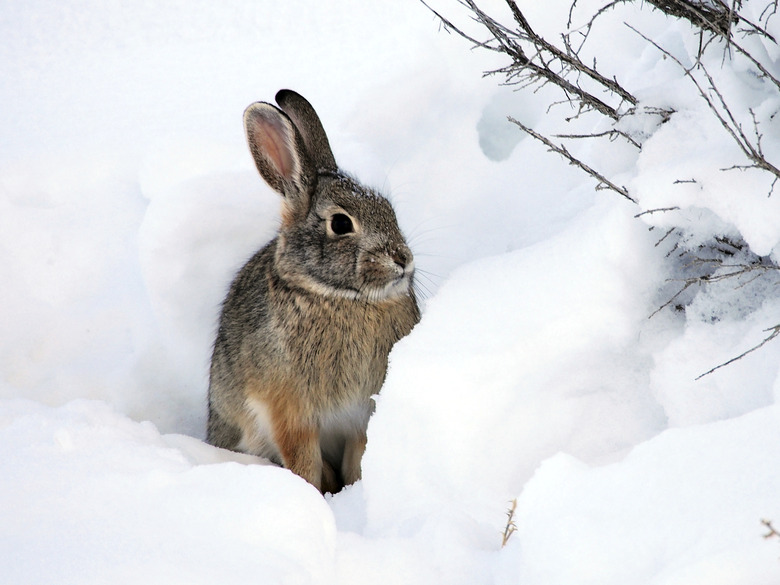How To Use A Heat Lamp To Keep Rabbits Warm
While rabbits have a variety of adaptations that allow them to cope with chilly winter temperatures, they are susceptible to hypothermia if their core body temperature drops too low. This is especially true of young animals, who lack the bulk of the adults, and can die from exposure to low temperatures. Heat lamps can help provide some safety against hypothermia, but they must be used safely to avoid overheating your rabbit or starting a fire.
Rabbit Room Temperature
Rabbit Room Temperature
Rabbits usually maintain body temperatures between 101.5 and 103 degrees. If their core temperature drops below 100 degrees, they can become sick. Ideally, you should provide your rabbits with supplemental heat, move them inside or take other steps to keep them warm anytime that the temperature drops below 40 degrees. However, it is always important to avoid overheating rabbits, who can become stressed or sick at temperatures over 85 degrees.
Heat Lamps, Bulbs and Monitoring Equipment
Heat Lamps, Bulbs and Monitoring Equipment
Most pet stores carry heat lamp fixtures that work well for heating rabbits. Because it is most important to provide heat during the night, opt for a red light bulb or ceramic heat emitter, which produces no visible light, to avoid stressing your rabbit with an unusual photo period. Purchase and use a digital indoor-outdoor thermometer to monitor the temperatures in the habitat. If you like, you also can use a thermostat, which will turn the light on and off to maintain a relatively consistent temperature.
Thermal Gradient
Thermal Gradient
You can avoid overheating your rabbit by incorporating a thermal gradient, meaning that one side of his enclosure should be warm and the other side of the enclosure should remain relatively cool. This will allow the rabbit to move around the cage as necessary to adjust his temperature. Thermal gradients are easy to achieve by simply placing the heat lamp over one end or corner of the habitat.
Fire and Heat Lamp Safety
Fire and Heat Lamp Safety
Always exercise care when using heat lamps near rabbit cages to prevent fires. Paper and straw substrates are highly flammable. Attach heat lamps securely above your rabbit's cage to ensure that it will not fall. Keep the lamp at least 24 inches away from the floor of the cage to ensure the rabbits cannot contact the lamp. For additional safety, use heat lamps that feature metal cages around the bulbs.
Additional Benefits
Additional Benefits
One of the ancillary benefits of using a heat lamp to keep your rabbits warm is that it can prevent the water bowls from freezing. During the winter, metal crocks are better than bottles for providing water to your rabbits as they resist freezing longer. Place the crock near the edge of the area heated by the lamp. Be careful not to warm the water too much, as rabbits will not drink warm water. When rabbits stop drinking, they cease feeding, which makes them susceptible to hypothermia.
References
- The Fund for Animals: Summertime Heat ... the Living Ain't Easy for Rabbits
- Three Little Ladies Rabbitry: Tips for Helping Your Bunny Survive the Cold
- Rise and Shine Rabbitry: Winter Care for Rabbits
- American Dutch Rabbit Club: Cold Weather Litters, Nest Boxes, Heat (and a Little Luck!)
- Nature Trail: Help! My Rabbit Isn't Eating Normally!
